| Radio Observations of Comet C/1995 O1 Hale-Bopp |
|---|

H2O, HDO, OH, H2O+, H3O+
CO, CO2, CO+, HCO+
H2S, SO, SO2, H2CS, OCS, CS
CH3OH, H2CO, HCOOH,CH3OCHO (methyl formate)
HCN, CH3CN, HNC, HC3N, HNCO, CN, NH3,
NH2, NH2CHO, NH
CH4, C2H2,
C2H6,
C3, C2
Na
I went through the cometary records last night just for fun. The only
comets which come close in brightness to C/1995O1 were in 1811, 1729 and 1577.
Looks like Hale-Bopp is a once-in-150
years sort of thing. Tycho said that the comet on 13 Nov 1577 was seen between
the new moon and Venus, vying in brightness with the latter, with a 30 degree
tail. It came to within 0.178 AU of the sun, which gave it an unfair
advantage over our shy-by-comparison friend Hale-Bopp!
The 1729 comet had a perihelion of 4AU so although its absolute
magnitude may have been high, its apparent magnitude was not much.
It was not a splendor contender! No other comet was
seen with such a large perihelion distance until this century. The 1811
comet had an orbit rather similar to Hale-Bopp but the brightest estimate
I have seen is `equal to Vega', by Schroter on 20 Oct, 1811.
Where is the comet in the Solar System? Look at this great
animation!


Comet Hale-Bopp, as viewed on the 43m in the 1.667 GHz line of OH. At the bottom is the first observation of the series, taken by the 1996 REU students. During this period, the comet was passing through the plane of the Milky Way, and background OH contaminated the signal. In the next spectrum, the OH is shown in October 1996; in the second from the top in January 1997 and at the top a spectrum from 1997 February 17. Solar radiation in the ultraviolet region of the spectrum interacts with OH molecules in the cometary coma. As the comet's orbital velocity with respect to the sun changes, the solar spectrum as seen at the comet undergoes a Doppler shift. During February and March, solar absorption lines move across the cometary spectrum; the line will change from an emission line to an absorption line as the OH molecule responds to these changes in its ultraviolet excitation. In this plot, the velocity changes in the comet have been suppressed--the comet is approaching us at 33 km/s in the 1997 February 17 spectrum. Spectra taken by Amy Lovell, Chris DeVries, Pete Schloerb, Al Wootten, Matthew Senay, William Irvine and the 1996 REU students. As a comet warms on its journey around the sun, molecules boil off of the icy nucleus. Water boils off in the inner solar system, as the nucleus is warmed by the sun. Solar ultraviolet radiation destroys the water molecule, sundering it into OH and H. Ultraviolet radiation also excites the OH molecule, ultimately leading to observable emission in the radio lines as seen here. For this reason, OH is a good monitor of the rate at which the comet produces water, the most abundant molecule in the nucleus of a comet.


Figure 1. Spectra of the (J,K)=(1,1) (top) and (3,3) (bottom) transitions of ammonia observed with the NRAO43m telescope towards C/1995 O1 (Hale-Bopp) during 1995 May 22. The positions of hyperfine structure components are plotted at the expected frequencies as vertical lines at their relative intensities. The beamwidth of the 43m telescope is 1'.1 at 24 GHz (corresponding to 1 x 105 km at the comet's 2.14 AU distance at the time of these observations). The spectra are superposed upon a photograph of the comet setting over the telescope taken on 1997 April 16.
© 1997 Al Wootten
Ammonia is thought to contain a significant fraction of the nitrogen in cometary atmospheres, but there had never been a secure detection of this species except from the in situ measurements of Halley by the Giotto spacecraft mass spectrometer.
Last year, we reported detection of two transitions of ammonia in Comet 1996/B2 (Hyakutake) using the 43m telescope (Palmer et al 1996). From the strength of the measured (1,1) and (3,3) lines, it could be determined that the kinetic temperature of the cometary gas is 67 K, and that the ammonia abundance is about 0.6% that of water, somewhat less than the 1.5% derived for comet Halley (note that we have revised the number upward since the publication of the first reports, owing to a reassessment of the water production rate).
C/1995 O1 (Hale-Bopp) has proven richer in its molecular content that had been dreamed. By late February its molecular emission lines had exceeded the maximum strength of those lines in C/1996 B2 Hyakutake, even though it lies more than ten times further away. Ammonia is a critical molecule in cometary chemistry, providing nitrogen to the coma chemical pathways. The exact chemistry is far from clear, however--in Hyakutake ammonia was only detected via its radio inversion lines, though infrared searches were performed. One viable explanation notes that the emission region was much larger than expected, filling the 43m beam, while the infrared pencil beam, centered on the nucleus, was sensitive to a much smaller region. If ammonia were not a parent molecule, as heretofore assumed, this result might be explained. Alternatively estimates of infrared band strengths may be miscalculated. In either eventuality, the radio observation places the best constraint upon the ammonia abundance in the cometary coma. We report observations of the (1,1) and (3,3) lines of ammonia in C/1995 O1.
Observations were made during 1997 May 22 at the 43m telescope of the National Radio Astronomy Observatory in Green Bank, West Virginia. The observed spectra are shown in Figure 1.
In this photograph
J. Mangum, A. Wootten, B. Butler (NRAO), D. Bockelee-Morvan,
(Observatoire de Paris-Meudon)


METHANOL COMET C/1995 O1 (HALE-BOPP)

Observations of H2CO in C/1995 O1 Hale-Bopp at the NRAO 12m Telescope
J. Mangum, A. Wootten, B. Butler (NRAO), D. Bockelee-Morvan,
(Observatoire de Paris-Meudon)

The U. Va. Comet Page
Meet the Molecules of C/1996 B2 Hyakutake
Back to my
Home Page